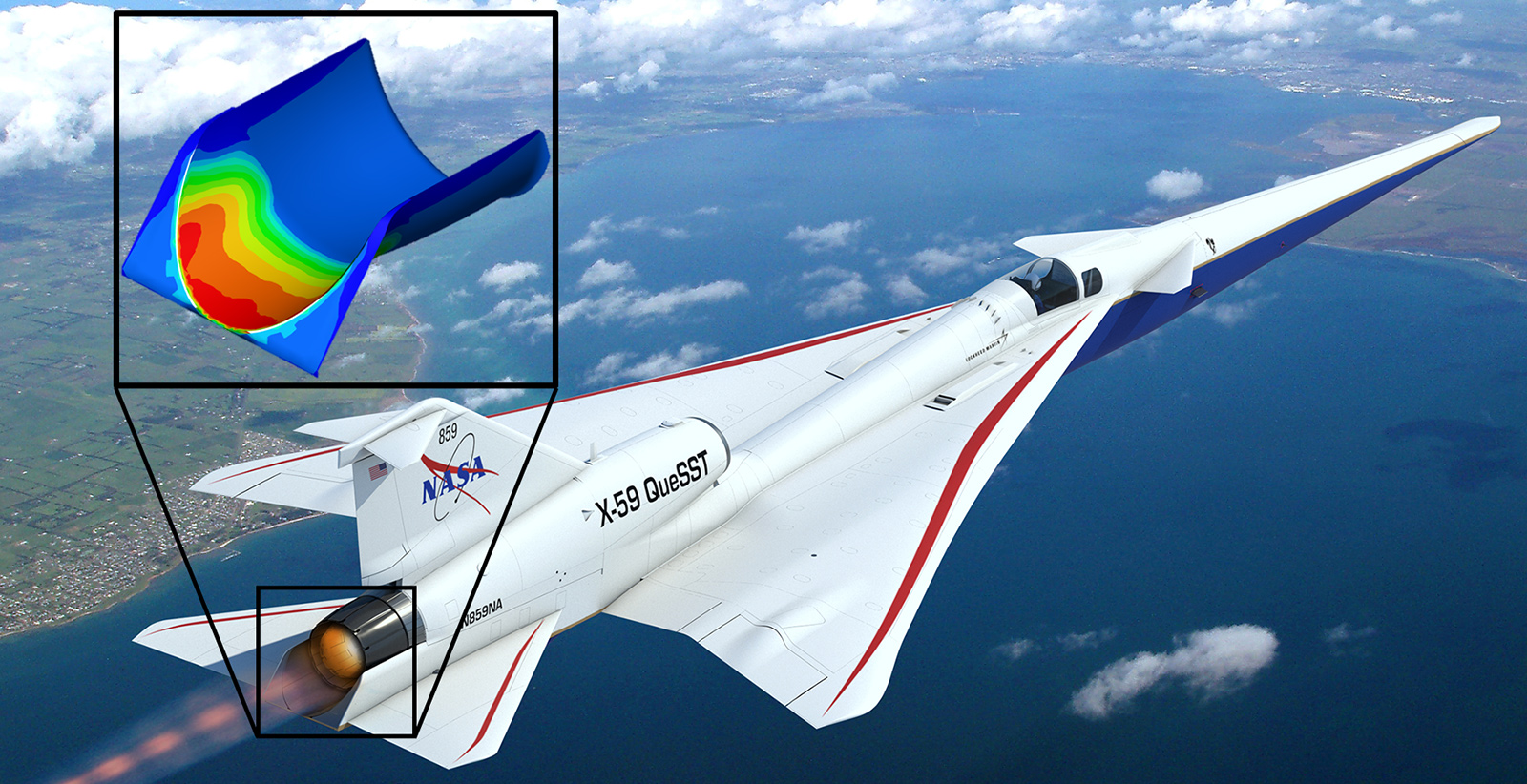Stay Up to Date
Submit your email address to receive the latest industry and Aerospace America news.
The Thermophysics Technical Committee promotes the study and application of mechanisms involved in thermal energy transfer and storage in gases, liquids and solids.
In August, GE Aviation delivered its custom F414-GE-100 engine for the X-59 Quiet Supersonic Technology, or QueSST, low-boom supersonic demonstrator aircraft to NASA’s Armstrong Flight Research Center in California. Developed through a collaborative effort between Lockheed Martin and NASA, the aircraft will test technologies for sonic boom reduction, which would be applicable to supersonic over-land flight by commercial aircraft. Following a critical design review in 2019, development and analysis of the X-59’s thermal management systems continued through 2020. The design includes an aft deck of the fuselage under the engine nozzle to help reduce sonic boom noise from the nozzle plume. This aft deck configuration presents challenges in thermal loads on the structure due to extended operation of the afterburner over that structure. Over the past year, Lockheed Martin and NASA independently assessed the thermal loads with high-fidelity computational tools with comparable results. This analysis provided information to ensure the design of the aft deck will be robust to the various operating environment rigors of high-altitude supersonic flight.
On March 19, the U.S. Department of Defense completed a test of a hypersonic glide body at the Pacific Missile Range Facility in Hawaii. During the test flight, the Missile Defense Agency monitored and gathered tracking data from the flight experiment that will inform its ongoing development of defenses against hypersonic weapons. This event is a milestone toward the department’s goal of fielding hypersonic war-fighting capabilities in the early to mid-2020s. The common hypersonic glide body will be made up of the weapon’s warhead, guidance system, cabling and thermal protection shield. Additionally, in September, DARPA and the U.S. Air Force announced completion of captive carry tests of two variants of the Hypersonic Air-breathing Weapon Concept and said they are ready to proceed to free flight testing. Army Lt. Gen. Neil Thurgood, who oversees the Army’s rapid development of hypersonics, directed energy and space capabilities, said in August during a virtual briefing as part of the Space and Missile Defense Symposium that the Defense Department plans several more flight tests in 2021.
In March, researchers of the High Enthalpy Flow Diagnostics Group, or HEFDiG, at the University of Stuttgart in Germany utilized light field deconvolution, a technique developed for microscope applications, to provide true 3D measurements in high-enthalpy plasma flows. The method is based on using a plenoptic camera, which can capture additional directional information on the light rays emitted by the plasma and allows researchers to effectively look inside or through the plasma. One of the experiments imaged fluorescent liquid being dropped in a small water pool. The results from this experiment illustrate how the light field deconvolution technique can image fluid flows without any entrained discrete particles, as other methods require. The measurements demonstrated at HEFDiG show that time-accurate, fully 3D-resolved plasma measurements can be made, enabling the analysis of complex interactions, instabilities or uniformity with only one signal exposure from one camera. Having such data would advance the use of high-enthalpy arcjet-driven plasma facilities to improve thermophysics models without having to make assumptions about the state and uniformity of the flow.
Contributors: Jay Brandon, Martin Eberhart and Stefan Loehle
Stay Up to Date
Submit your email address to receive the latest industry and Aerospace America news.




